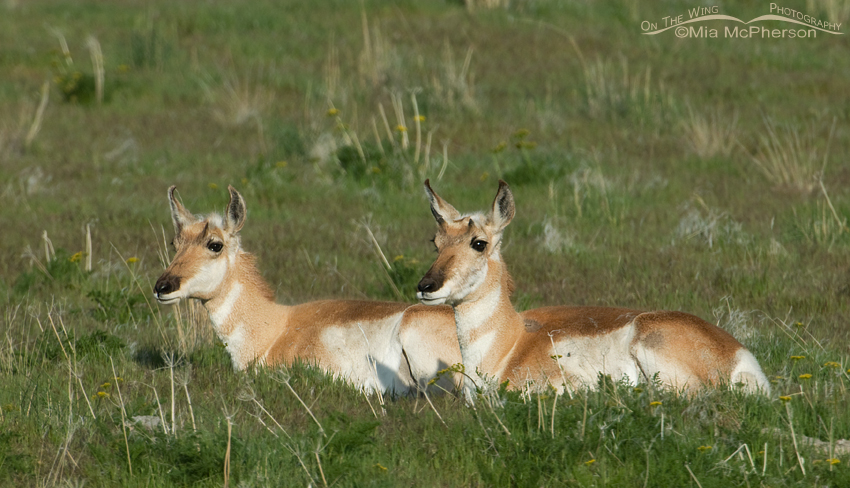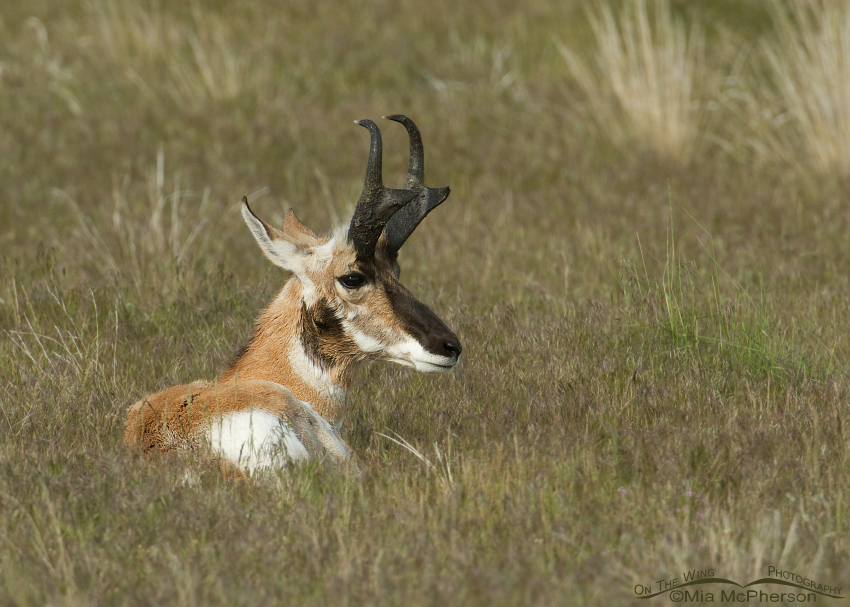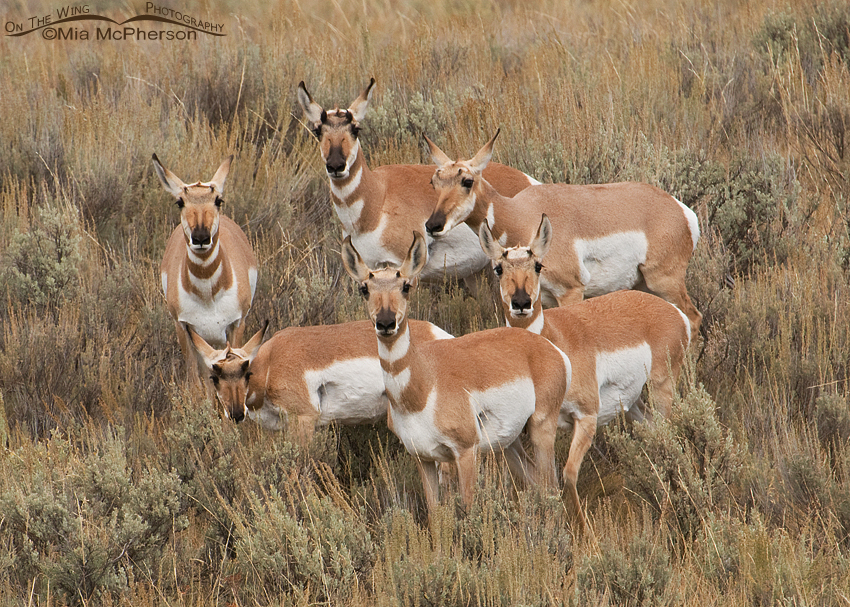I’ve lived in the west and southwest many times during my life. I would often see Pronghorns (Antilocapra americana) in the distance but because of the lack of focal length or good camera bodies they were a nemesis for me. Try as I might I was never able to get images of them that I liked. I love to watch pronghorns running across the grasslands, prairies and sagebrush flats, they move with astounding speed and grace.
 Resting Pronghorn does, Utah – D200, f10, 1/640, ISO 400, 200-400mm VR with 1.4x TC at 400mm, natural light
Resting Pronghorn does, Utah – D200, f10, 1/640, ISO 400, 200-400mm VR with 1.4x TC at 400mm, natural light
Pronghorns are North America’s fastest mammal, they can attain speeds of more than 40 miles per hour, with spurts to 70 mph and can out run almost all of their predators. Pronghorn are know to be the second fastest land animal in the world, their speed is only exceeded by the Cheetah but they can sustain their speed far longer than the Cheetahs can. Though known as Pronghorn Antelope it is not a true antelope and it is the only surviving member if the Antilocapridae family.
 Pronghorn buck at rest, Utah – D200, f8, 1/350, ISO 400, 200-400mm VR with 1.4x TC at 400mm, natural light
Pronghorn buck at rest, Utah – D200, f8, 1/350, ISO 400, 200-400mm VR with 1.4x TC at 400mm, natural light
Pronghorn bucks can be identified by the dark patch of hair beneath the eye on the jawbone and that their horns are more predominant than the females. The horn is not an antler, the horn is a hollow sheath over a bony core, the sheath consists of keratin and it is shed and regrown yearly.
Pronghorns are highly adapted to the temperature extremes found on the open plains, they have hollow hair that is used to regulate their internal temperatures. When the hairs lie flat they keep out the cold, when the hairs are erect air can circulate allowing body heat to escape.
 Circle of Pronghorn does in Montana – D200, f11, 1/160, ISO 320, 200-400mm VR with 1.4x TC at 400mm, natural light
Circle of Pronghorn does in Montana – D200, f11, 1/160, ISO 320, 200-400mm VR with 1.4x TC at 400mm, natural light
The does and young are often seen in herds, grazing on forbs, shrubs and grasses. Males do associate themselves with the herds although they are often seen alone. Pronghorns also seem to enjoy nibbling on the buds, leaves and flowers of the Common Sunflower. They are found in western and southwestern North America with their range extending into southern Canada and northern Mexico.
My patience and persistence has paid off in finally getting the images of these beautiful Pronghorns I had dreamed of. I hope to take many more.
Life is good.
Mia
Click here to see more of my Pronghorn photos plus facts and information about this species.

